Dreams Come True on the Cool Block
Ten years ago, a Big Idea constellated in the mind of pro-social behavior change researcher and innovator David Gershon, CEO of the Empowerment Institute. The idea was to operationalize the modest goal of keeping the planet viable into the long-term future and improving the quality of life for humanity at the same time.
“What if there was a program that could achieve measurable and substantive behavior change and at scale around the most critical issues affecting the wellbeing of [urban citizens] and our planet? What if it could empower households to voluntarily take actions that could achieve a…
- 30% reduction in water use
- 25% reduction in carbon emissions
- prepare families and their blocks to become resilient in the face of earthquakes and other natural disasters, and
- make city blocks safer, healthier, greener, friendlier, and a more beautiful place to live?
And what if this program could engage the participation of at least 25% of the people living on any block across a city? What would be the implications of this social innovation for the quality of life in a city? …for the future of cities in America? …around the world?”
Making Dreams Come True
Gershon is a dreamer and this may seem like merely a dream – but it is beginning to happen in the real world, on-the-ground in multiple cities, as we speak.
The author of thirteen books and developer of proven programs, Gershon integrates key learnings into a program now being piloted in three world-class cities in California – San Francisco, Los Angeles, and Palo Alto in the Silicon Valley. That program is “The Cool Block”.
Describes James Keene, City Manager of Palo Alto, “Cities are the platform for change in our world today. The Cool Block links the challenges facing our planet to the intimate, personal, social scale of the city block as the way we can meet the environmental, safety, and social connectedness challenges of our times.” Continues Keene, “The psychologist Carl Rogers said, ‘The personal is the most universal.’ This program starts and ends with that premise and promise—that the individual, household, and neighbors are the way forward in the face of seemingly insoluble global problems.”
The “Cool” in Cool Block
The concept of “Cool” originates from the critical challenge we face in stabilizing the earth’s temperature rise to well below 2 degrees Celsius, a goal agreed as essential at the most recent United Nations Conference on Climate Change, COP21. According to UN-Habitat, cities represent 70% of the planet’s carbon emissions, which scientists agree contribute to this temperature rise. Moreover, citizens’ daily lifestyle choices represent 70% of these emissions.
As a result of the large carbon footprint of cities and citizens, they provide a key leverage point for addressing the climate change issue. Experts from the National League of Cities explain “Cities are the places where we live and interact. We expect our city leaders to keep [us] healthy, safe and vibrant… The nation’s mayors are leading the charge to develop sustainable, livable, smart cities.”
The Cool Block begins with a grassroots focus on this challenge. Observes Gavin Newsom, Lieutenant Governor of California and Author of Citizenville, “The Cool Block is an exemplary how-to guide for local communities to make a significant impact on climate change. When added together, the effort of thousands of individual communities is what will allow us to tackle climate change at scale. This program demonstrates the untapped potential of citizens to engage in this grassroots initiative in an effective and achievable way.” Adds Newsom, “Very cool, indeed!”
World Class Pilot Cities
Three world-class cities in California are currently piloting the program on the ground in their communities. These cities see the Cool Block as a way to help achieve the goals of their climate action plans. Keene in Palo Alto has taken on the program as a tool in achieving the city’s sustainability and climate action goals (S/CAP). San Francisco’s Department of the Environment has linked it to San Francisco’s climate action initiative (0-50-100 Roots). And in Los Angeles, the City Council is partnering with the Cool Block and the Neighborhood Council Sustainability Alliance to make Los Angeles the largest city to take on the challenge.
City Councilman Paul Koretz aims to spread this ground-breaking program across LA, and help it accelerate across the country: “In addition to strong and binding emissions reductions targets set by local, state, national and international government bodies, there needs to be in place a robust and scalable grassroots model to engage residents on a neighborhood-by-neighborhood, house-by-house level if we are to truly turn around a rapidly worsening climate crisis. As many pundits in the climate movement have suggested that the world looks to California for leadership, the City of Los Angeles then is in a unique position to lead California and therefore the world by establishing a model grassroots effort which we are calling ‘Cool Blocks LA,’ that can be shared and spread worldwide.”
Program Structure
The Cool Block taps intrinsic motivators, and is delivered through a block-based peer support group. It consists of a book, website and block-based meetings with neighbors that empower participants to take action that can be brought to scale. A larger initiative called the Cool City Challenge will enable that program to go to scale.
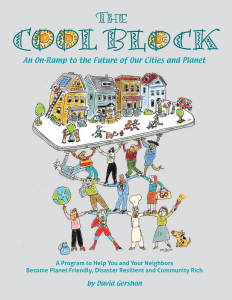 The value proposition offered to Cool Block leaders and participants is this: Take a journey to become more planet friendly, disaster resilient and community rich. Experience greater meaning, purpose, community and the ability to make a difference.
The value proposition offered to Cool Block leaders and participants is this: Take a journey to become more planet friendly, disaster resilient and community rich. Experience greater meaning, purpose, community and the ability to make a difference.
Explains Sandra Slater, Northern California Director of the Cool City Challenge, and Palo Alto Program Manager for the Cool Block pilot: “Getting to know your neighbors is one of the best benefits of [this innovative program]. Participants select from a menu of 112 action recipes that include carbon reduction, water conservation, resiliency and livability. They… track their progress through a web platform that has [a wealth of local] resources necessary to help achieve the actions they choose to complete. Some actions are done as individuals and others are collective and carried out by the Cool Block team.”
The program provides the structure that enables households to confidently act to keep the planet viable and improve the quality of life for humanity, and to empower others to do the same. It includes the meeting protocols and action recipes necessary to engage neighbors, adopt pro-social behaviors and empower others.
Smart Citizens Key to Building Smart Cities
Smart City builders embrace the point of view that citizens are a smart city’s best partners. Say Jennifer James and Steph Stoppenhagen of Black and Veatch: “We are now realizing that if we don’t involve citizens, and actually empower them with the ability to both access and provide data… then we are missing a very substantial step … We need to design technology offerings to better enable the citizen, to empower them with what is meaningful, making them part of the solution.”
To this end, on-the-ground Cool Block program is supported by a website, currently in early pilot state, which provides intelligence and support to citizens on the Cool Block journey and collects participant-provided action-achievement data.
Using the website, participants share the data on their actions taken, contributing their “drops in the bucket” which collectively can make a difference in the world. Through this feedback loop, citizens can see their own direct impact, and spread their social impact across their neighborhood, their city and beyond.
Action data will be aggregated, gathered and analyzed by the initiative, and also made available to the research community. Behavior data can be correlated, for example, with hard data on energy, water, technology uptake and more.
Says Max Wei, Program Manager for the Sustainable Energy Systems Group at the Lawrence Berkeley National Laboratory, “Lawrence Berkeley Labs can really contribute to the Cool City Challenge in terms of providing research and development methodologies and also a framework for collecting the data, and then also doing the modeling and the data analysis itself.”
Activating the System
The website also connects participants with powerful local resources to help them succeed with their Cool Block action plans. These resources — data, tools, assessments, training, discounted equipment and more – are provided by their city, NGOs and the business community. Action by action, the demand and supply sides of a sustainable local economy are connected, and the overall system of public and private players are activated.
Engaging citizens can serve as a demand-side driver to increase the pace of renewable energy, energy efficiency and new technology adoption.
Observes Stuart Bernstein, Global Head of Clean Technologies and Renewables at Goldman Sachs, “There are a number of very smart people focused on the supply side of the equation. But that’s going to take a long time. We’ve got to also focus on the demand side of the equation. What we find very interesting about the Cool City Challenge is, it does just that.”
Value Delivered
Neighbors across our three pilot cities have found the Cool Block value proposition to be compelling. The invitation to participate is delivered by block leaders, on the ground and door to door. Of those neighbors who answer their door and receive a personal invitation, over half agree to join a Cool Block team.
Reports Annette Isaacson, Block Leader from Palo Alto, whose block was recently the first to complete the alpha pilot: “Last summer, we came together as individuals who wanted to do something about global warming while getting to know our neighbors at the same time, and we have morphed into a neighborhood group that is making our street and our planet a better place for all of us.” Elaborates Issacson, “As a team, we’ve taken a whopping 178 actions to help us save resources like energy and water, get prepared for emergencies, and help make our neighborhood friendlier and more resilient.”
Agrees Lisa Dossey, Block Leader in San Francisco: “I love the bottom-to-top approach of this amazing program. Making a difference in our homes and on our blocks is the foundation to making a difference in our city and our world.”
Discussion
Leave your comment below, or reply to others.
Read more from the CityMinded.org Blog
Spotlighting innovations in urban sustainability and connected technology
Middle-Mile Networks: The Middleman of Internet Connectivity
The development of public, open-access middle mile infrastructure can expand internet networks closer to unserved and underserved communities while offering equal opportunity for ISPs to link cost effectively to last mile infrastructure. This strategy would connect more Americans to high-speed internet while also driving down prices by increasing competition among local ISPs.
In addition to potentially helping narrow the digital divide, middle mile infrastructure would also provide backup options for networks if one connection pathway fails, and it would help support regional economic development by connecting businesses.
Wildfire Risk Reduction: Connecting the Dots
One of the most visceral manifestations of the combined problems of urbanization and climate change are the enormous wildfires that engulf areas of the American West. Fire behavior itself is now changing. Over 120 years of well-intentioned fire suppression have created huge reserves of fuel which, when combined with warmer temperatures and drought-dried landscapes, create unstoppable fires that spread with extreme speed, jump fire-breaks, level entire towns, take lives and destroy hundreds of thousands of acres, even in landscapes that are conditioned to employ fire as part of their reproductive cycle.
ARISE-US recently held a very successful symposium, “Wildfire Risk Reduction – Connecting the Dots” for wildfire stakeholders – insurers, US Forest Service, engineers, fire awareness NGOs and others – to discuss the issues and their possible solutions. This article sets out some of the major points to emerge.
Innovating Our Way Out of Crisis
Whether deep freezes in Texas, wildfires in California, hurricanes along the Gulf Coast, or any other calamity, our innovations today will build the reliable, resilient, equitable, and prosperous grid tomorrow. Innovation, in short, combines the dream of what’s possible with the pragmatism of what’s practical. That’s the big-idea, hard-reality approach that helped transform Texas into the world’s energy powerhouse — from oil and gas to zero-emissions wind, sun, and, soon, geothermal.
It’s time to make the production and consumption of energy faster, smarter, cleaner, more resilient, and more efficient. Business leaders, political leaders, the energy sector, and savvy citizens have the power to put investment and practices in place that support a robust energy innovation ecosystem. So, saddle up.
Sustainability and Resilience: Not Quite the Perfect Relationship
People seem frequently to assume that the terms “sustainability” and “resilience” are synonyms, an impression reinforced by the frequent use of the term “climate resilience”, which seems to enmesh both concepts firmly. In fact, while they frequently overlap, and indeed with good policy and planning reinforce one another, they are not the same. This article picks them apart to understand where one ends and the other begins, and where the “sweet spot” lies in achieving mutual reinforcement to the benefit of disaster risk reduction (DRR).
Stormwater Management is an Equity Issue
As extreme weather conditions become the new normal—from floods in Baton Rouge and Venice to wildfires in California, we need to clean and save stormwater for future use while protecting communities from flooding and exposure to contaminated water. Changing how we manage stormwater has the potential to preserve access to water for future generations; prevent unnecessary illnesses, injuries, and damage to communities; and increase investments in green, climate-resilient infrastructure, with a focus on communities where these kinds of investments are most needed.
Public-Private Collaboration – Essential for Disaster Risk Reduction
A few years ago, I worked with some ARISE-US members to carry out a survey of small businesses in post-Katrina New Orleans of disaster risk reduction (DRR) awareness. One theme stood out to me more than any other. The businesses that had lived through Katrina and survived well understood the need to be prepared and to have continuity plans. Those that were new since Katrina all tended to have the view that, to paraphrase, “well, government (city, state, federal…) will take care of things”.
While the experience after Katrina, of all disasters, should be enough to show anyone in the US that there are limits on what government can do, it does raise the question, of what could and should public and private sectors expect of one another?
Planning for the New Mobilities
When planning for new mobilities, it is important to be a little skeptical. Advocates often exaggerate the benefits and overlook significant costs. Here’s an example. Optimists predict that autonomous cars will reduce traffic congestion, crash risk, energy consumption and pollution emissions, but to achieve these benefits they require dedicated lanes for platooning (many vehicles driving close together at relatively high speeds). When should communities dedicate special lanes for the exclusive use of autonomous vehicles? How much should users pay for the privilege? How should this be enforced? Who will be liable if a high-speed platoon crashes, resulting in a multi-vehicle pile-up?
Why Investing in Play Must Be Part of COVID Recovery
Infrastructure is on the tip of every mayor’s tongue. It’s no wonder, with billions in federal funding on the table for the first time in a generation and rapidly compounding infrastructure needs. American Rescue Plan dollars represent a once-in-a-lifetime opportunity to invest in communities, support resident priorities, and move the needle on racial equity all at the same time. Parks and playgrounds exist in an ideal sweet spot in each of these areas, and cities should consider making investments in these vital pieces of community infrastructure as part of their recovery and resilience strategies.
Picking the Right Team: Who Needs to Be Involved in Disaster Risk Reduction?
Cities and communities are “systems of systems”: they are complexes of interacting physical, environmental, infrastructural, economic and social systems. Each system may have a different owner and management chain, yet each needs to interact with the others to minimize risk from hurricanes, earthquakes, floods, tornadoes, wildfires and the like – as well as from pandemics. This means that disaster risk reduction (DRR – defined as disaster adaptation, mitigation, planning, response and recovery) is a “team sport”. In any community, let alone a large city or state, multiple “players”, from the public and private sectors, will be needed to complete the team. In my experience with DRR activities in cities and communities, however, key players may be omitted. This article identifies who the players are, and why they need to be involved as well as what that involvement should include.
Digitally Connected Campuses Offer Enhanced Experiences
Following such a tumultuous school year where change was the only constant, perhaps there is no greater opportunity for colleges and universities to reimagine their campuses than there is today. To stay relevant in today’s increasingly competitive educational marketplace, schools must embrace the smart technologies that will enhance the collegiate experience and ensure seamless operations regardless of the next crises. By being proactive and planning now, schools can install the robust communications backbone and agile infrastructure necessary to support emerging technologies and create the connected campus of the future.
Small-scale manufacturing should be part of every city’s plan for economic recovery
Small-scale manufacturers are locally owned businesses that produce anything from hats to hardware to distilled spirits to coffee and more. Unlike large manufacturers, they fit into relatively small commercial spaces and are clean, quiet neighbors. Your city might be home to some of these kinds of businesses already.
How Cities Are Preparing for the Future of Work
Given the rapidly changing “future of work” space and the impact on our cities over the last 15 months, I decided to catch up with Robert Hoyle Brown to get the latest trends and insights on where we are now and where we are headed next.
Their new report “21 Places of the Future” touches on the key drivers for the creation of jobs in relation to place. We discussed how architectural heritage is tied to jobs and place. We also discussed how people matter and the future role of philosophers and ethicists in our data-driven world. Given the recent cyber attacks on US companies, we discussed the role of cybersecurity as a driver for the creation of jobs, including the jobs of cyber attack agent and cyber calamity forecaster. And we discussed the future of virtual workplaces. Here to stay, go, or evolve? Take a look.




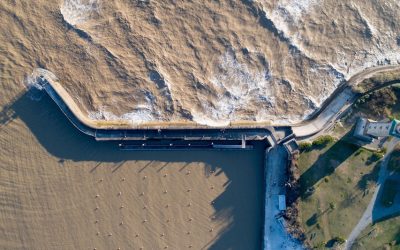
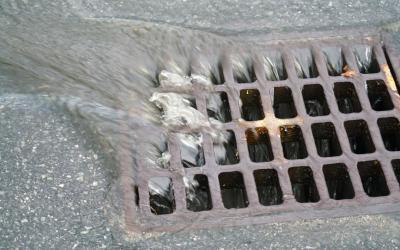
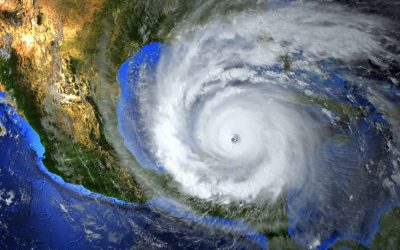
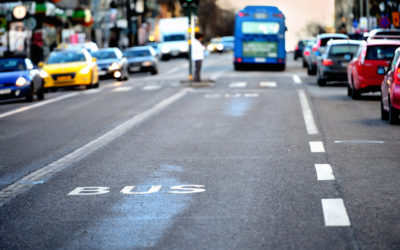

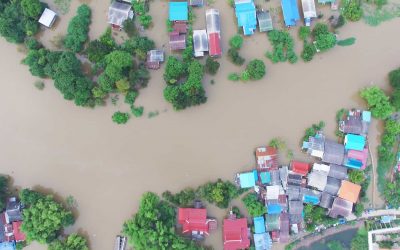
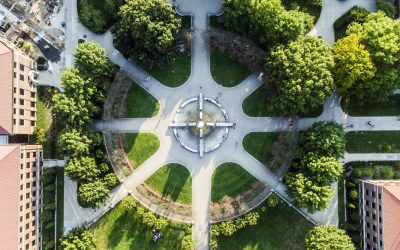
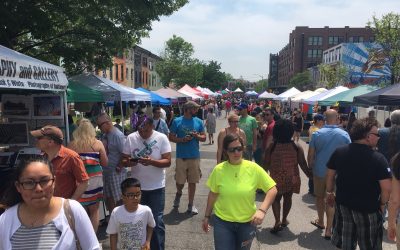
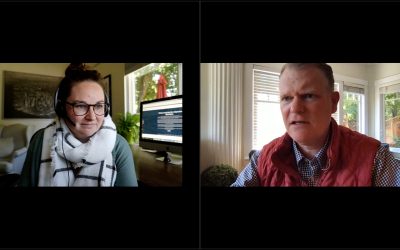


0 Comments